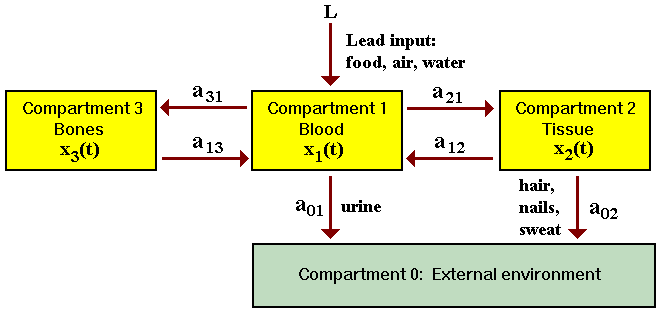|
|
|
|
|
|
Part 1: Background: A Compartment Model
Lead enters the human body from the environment by inhalation, by eating, and by drinking. From the lungs and gut, lead is taken up by the blood and rapidly distributed to the liver and kidneys. It is slowly absorbed by other soft tissues and very slowly by the bones. Lead is excreted from the body primarily through the urinary system and through hair, nails, and sweat (see figure).

We model the flow of lead into, through, and out of a body with separate compartments for blood, bones, and other tissues, plus a compartment for the external environment. For i = 1, 2, 3, we let xi(t) be the amount of lead in compartment i at time t, and we assume that the rate of transfer from compartment i to compartment j is proportional to xi(t) with proportionality constant aji. We do not bother to represent Compartment 0 by a variable, because we are not concerned with the quantity of lead outside the body. The body is not a closed system, but including an extra compartment in the model creates a closed system. We assume that exposure to lead in the environment results in ingestion of lead at a constant rate L. This external input is a “driving force” -- that is, the system is nonhomogeneous. The units for amounts of lead are micrograms (ug), and time t is measured in days.
|
|
|
| modules at math.duke.edu | Copyright CCP and the author(s), 1998-2000 |